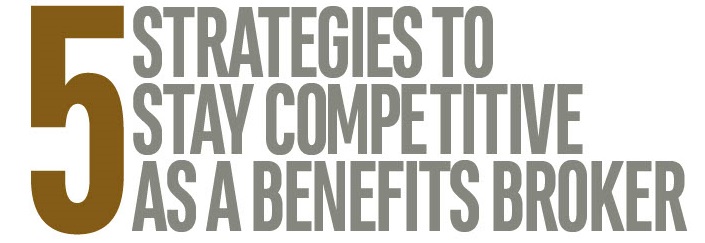
By Tracy Funk
Seismic shifts in the employee benefits space — especially with regards to how employees engage with benefits — show a strong demand for a seamless benefits package, one with personalized enhanced benefits tailored to the unique needs of employers and their employees. To meet that demand and remain relevant, brokers must become partners. They must learn about their clients’ enrollment participation, cater to employee benefits preferences, and most of all, eschew the traditional model of benefits planning that only offers standard core benefits or a grab-bag of stale voluntary benefits.
Here are five tips to help brokers stay competitive in today’s employee benefits environment.
1) Be a Benefits Advisor by Focusing on Employer Needs and Wants
Instead of viewing yourself as a benefits broker, consider your role a benefits advisor. Take the time to evaluate your client’s understanding of their benefits and the employees’ enrollment participation. You might uncover pain points that can easily be solved with the right set of benefit offerings. As you familiarize yourself with the enrollment and benefits issues specific to your client, you can leverage that information to communicate a targeted enrollment plan with tailored recommendations that deliver maximum value and impact. Brokers who act as advisors and who understand the issues of employers will continue to stay relevant, and become more valuable.
2) Stop the Product Dump of Benefits
Often employers are concerned about one primary issue: containing benefits costs. If the benefits package you offer includes a number of benefits that employees choose not to elect, the employer is left with a huge loss on their investment. The one-size-fits-all mentality of a product dump flies in the face of a seamless benefits package. You run a similar risk by outsourcing to carrier representatives who lack the historical knowledge of your client to provide meaningful benefits options. Both of these tactics can ultimately lead to employers overspending on benefits that don’t fit their company. Instead, recommend thoughtful, personalized benefits based on the employer’s individual needs.
3) View “Voluntary Benefits” as “Enhanced Benefits”
Benefits outside of traditional, core offerings are gaining momentum among employees. A 2018 Willis Towers Watson study showed that more than two-thirds of employers (69 percent) believe these benefits will be a very important component of their employee value proposition in three to five years. Although these are referred to across the industry as “voluntary benefits,” there are opportunities to communicate with clients how these benefits are integral to a rounded, holistic benefits plan. To positively communicate the value add to a client’s basic benefits, frame these benefits as “enhanced benefits.” It’s possible to further break down these enhanced benefits into two types: “core” enhanced benefits (dental, vision, accident, critical illness) and “supplemental” enhanced benefits (telemedicine, ID theft protection, student loan repayment, pet insurance). A unique set of benefits will empower employers to become more competitive in talent acquisition and keep employees happy.
4) Start the Benefits Conversation Before Open Enrollment
Discuss benefits options early on with your client, before open enrollment, allowing them time to explore and assess the value of your recommendations. Often the biggest hurdle in having the benefit enrollment conversations too close to open enrollment is the sticker-shock from rate increases. That blow can be softened significantly by discussing options ahead of time. Your clients want a year-round benefits strategy, so waiting until renewal season or open enrollment to tackle your clients’ issues is far too late. By proactively discussing benefits and attendant issues, you as a broker put yourself far ahead of the pack.
5) Use Benefit Administration and Communication Tools

Brokers must brace themselves for the upheaval of traditional benefits packages. The old model of poor cost-containment, product dumps, and mediocre communication will lead to the disintermediation of benefits brokers altogether. Don’t be eclipsed by an ever-changing market. At Hodges-Maces we offer state-of-the-art benefit administration and communication tools. We also have a partnership program called SmartBridge. Most important, we’re transparent with how we work with other brokers to execute successful benefits strategies for our clients.

Tracy Funk is VP of carrier solutions for Hodges-Mace, where she is the conductor of carrier relationships. In this capacity she works with internal sales and operations teams, as well as consulting partners to ensure the success of mutual clients. Tracy has a broad range of experience from formulating private exchange and ACA compliance strategies to overseeing home office worksite operations. She graduated from the University of New Hampshire with a business administration degree. Contact Tracy at tracyfunk@hodgesmace.com or https://www.linkedin.com/in/tracy-funk/.
